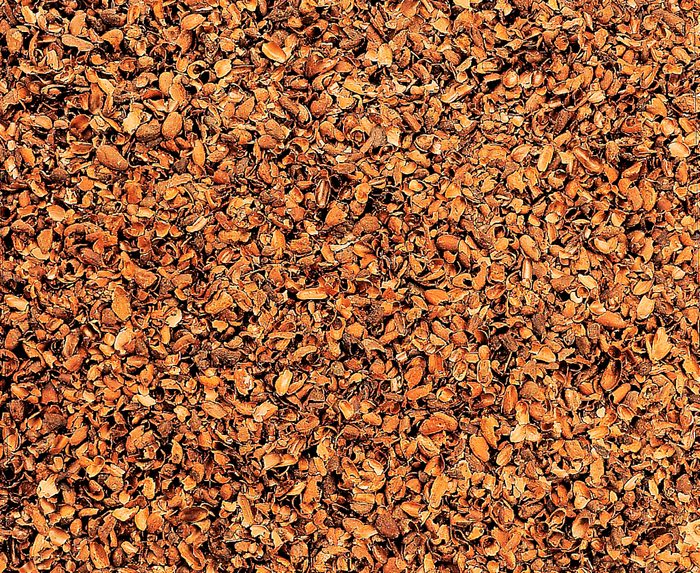
Cocoa Bean Hulls
A useful option for types of mulch and a byproduct of the chocolate industry, cocoa bean hulls work in a variety of landscaping styles and don’t compact over time. Use an inch-deep layer to help suppress weeds, but find another option if you have dogs —just like chocolate, cocoa bean hulls are toxic.
Creating a new garden or landscape? Start with our basic mulch guide.
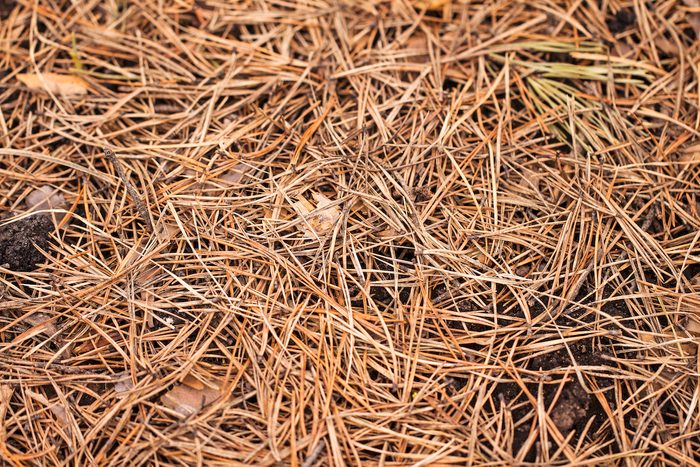
Evergreen Needles
If you have conifers on your property, the fallen foliage makes excellent mulch. Rake out extra needles from under the tree and transfer a 1- to 2-inch layer to your beds. Contrary to popular belief, evergreen needles do not make soils more acidic.
We asked a garden expert: Is it OK to use rubber mulch?
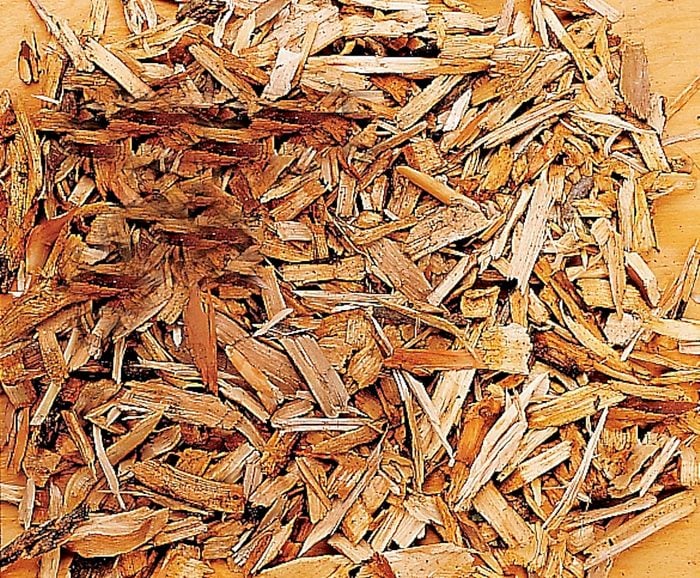
Wood Chips
Wood chips come in many forms, stay in place in windy conditions, and can be very inexpensive. Ask your local municipality or utility company—it may give wood chips away for free. Pile on a 3-inch layer for weed-fighting benefits.
Psst—you’ll want to steal these genius garden hacks immediately.
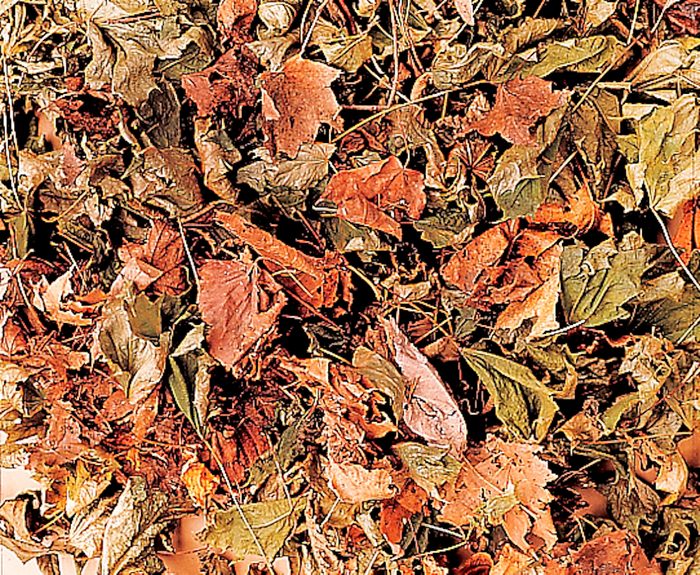
Autumn Leaves
Recycle leaves for a quick (and free!) way to put nutrients back into your beds. Shred with a lawnmower and use a 1- to 3-inch layer. Leaves may blow away with the wind, so consider taking the time to create a simple leaf compost for better results.
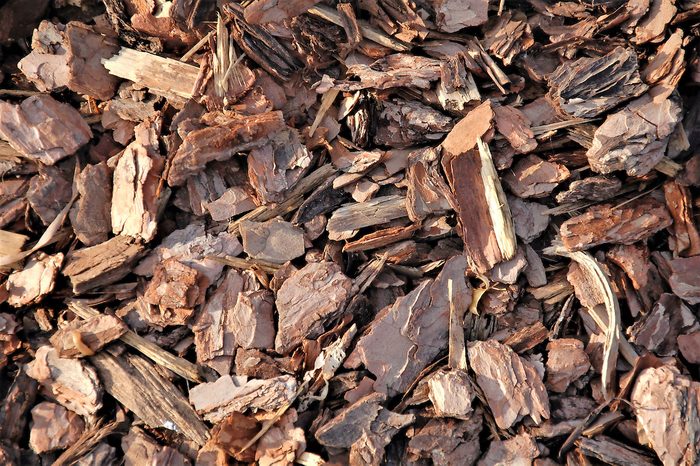
Bark Chunks
Look for medium and large chunks for the base of trees and shrubs. Bark is very attractive, comes in many colors and offers excellent weed resistance. Just keep the bark a few inches away from plant crowns and buildings to avoid ant and rodent damage.
Discover 12 never-skip gardening tips from master gardeners.
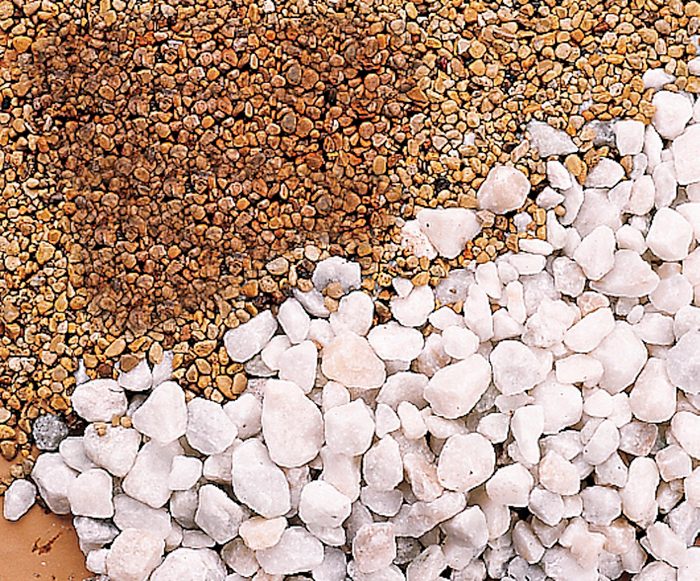
Rock and Gravel
Fabulous for plants that need tons of drainage, rock or gravel is an attractive mulch option that needs little maintenance. The downside: These materials don’t improve the soil structure, add nutrients or regulate temperatures as organic mulches do.
When you’re done looking at types of mulch, find out what to do if you see white stuff on your mulch.
